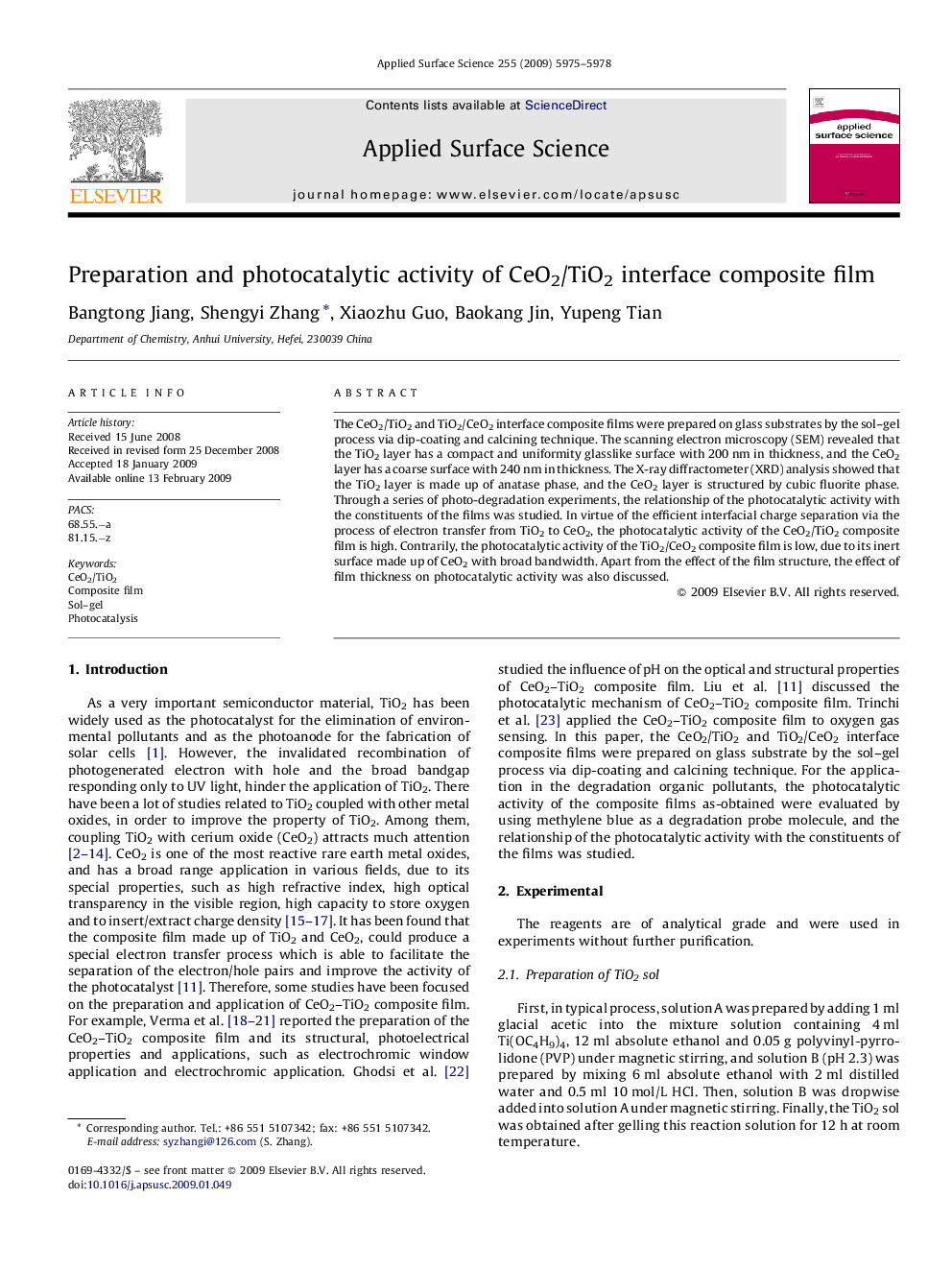| Article ID | Journal | Published Year | Pages | File Type |
|---|---|---|---|---|
| 5367312 | Applied Surface Science | 2009 | 4 Pages |
The CeO2/TiO2 and TiO2/CeO2 interface composite films were prepared on glass substrates by the sol-gel process via dip-coating and calcining technique. The scanning electron microscopy (SEM) revealed that the TiO2 layer has a compact and uniformity glasslike surface with 200Â nm in thickness, and the CeO2 layer has a coarse surface with 240Â nm in thickness. The X-ray diffractometer (XRD) analysis showed that the TiO2 layer is made up of anatase phase, and the CeO2 layer is structured by cubic fluorite phase. Through a series of photo-degradation experiments, the relationship of the photocatalytic activity with the constituents of the films was studied. In virtue of the efficient interfacial charge separation via the process of electron transfer from TiO2 to CeO2, the photocatalytic activity of the CeO2/TiO2 composite film is high. Contrarily, the photocatalytic activity of the TiO2/CeO2 composite film is low, due to its inert surface made up of CeO2 with broad bandwidth. Apart from the effect of the film structure, the effect of film thickness on photocatalytic activity was also discussed.
